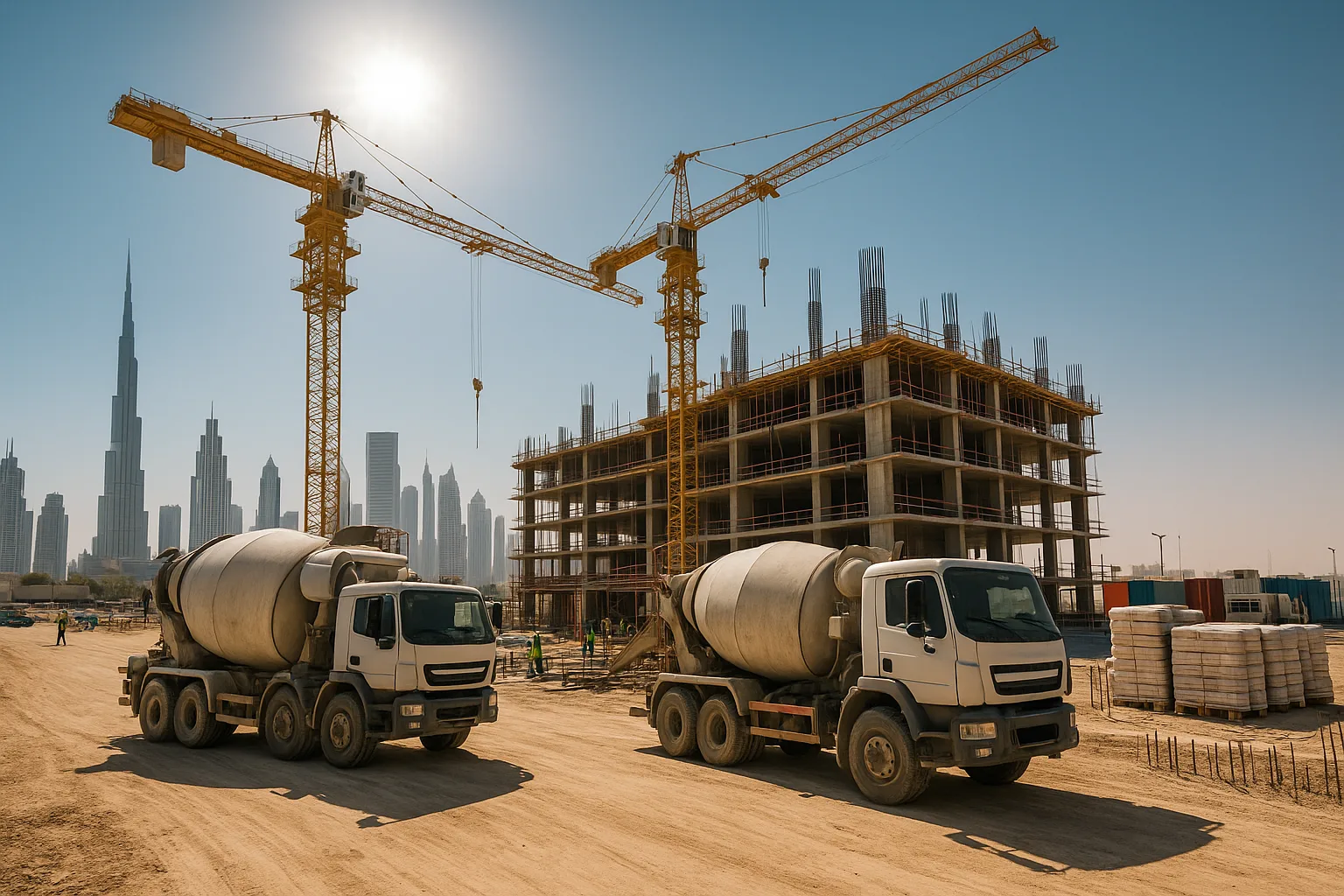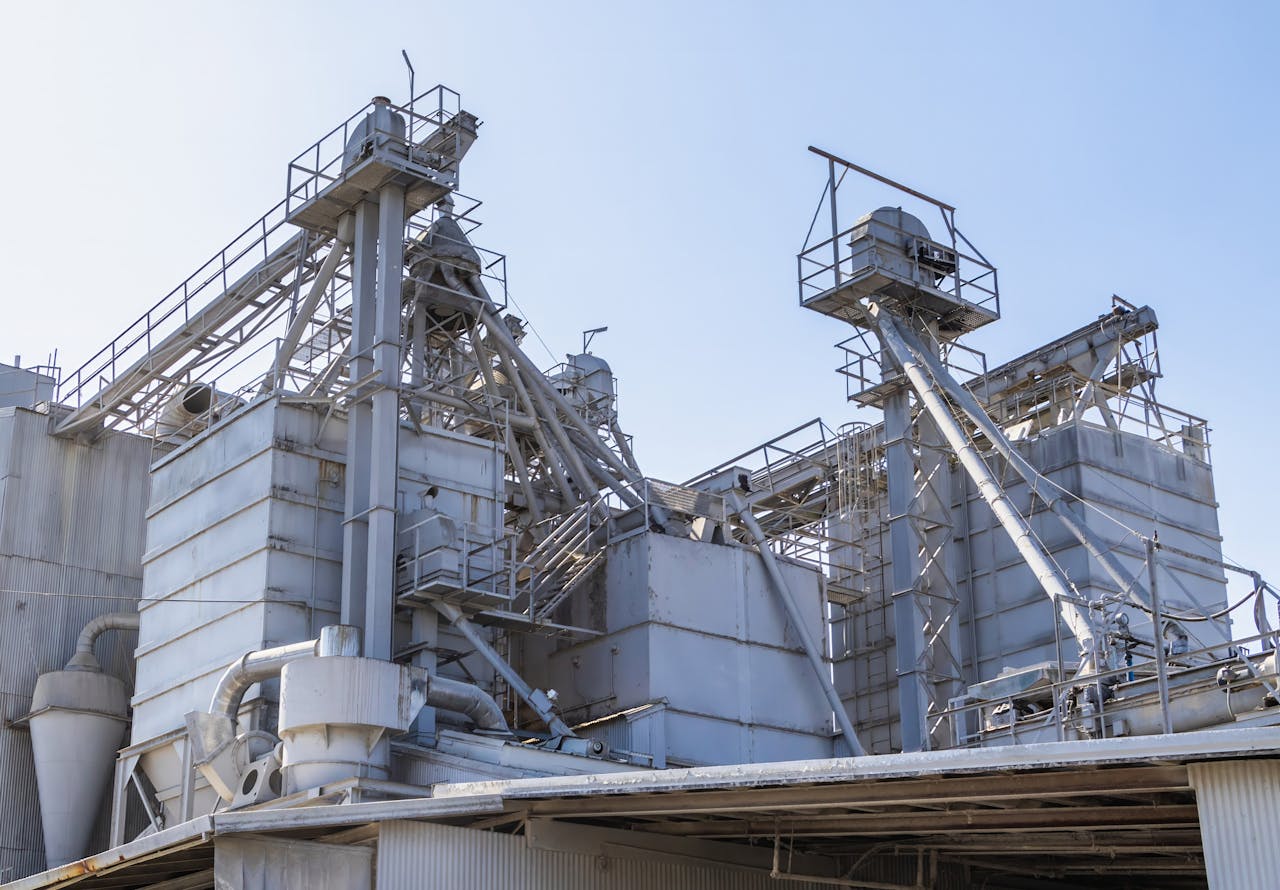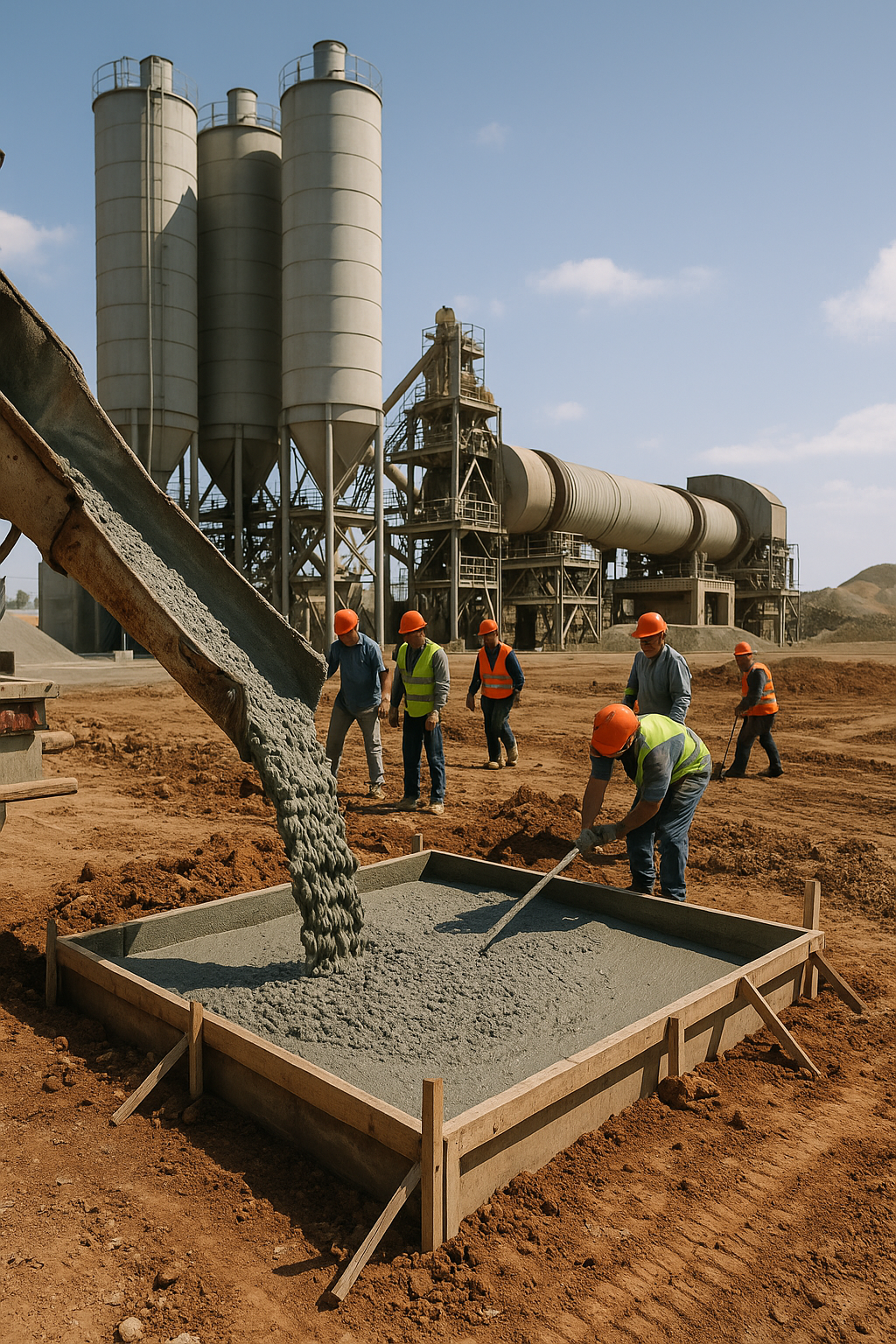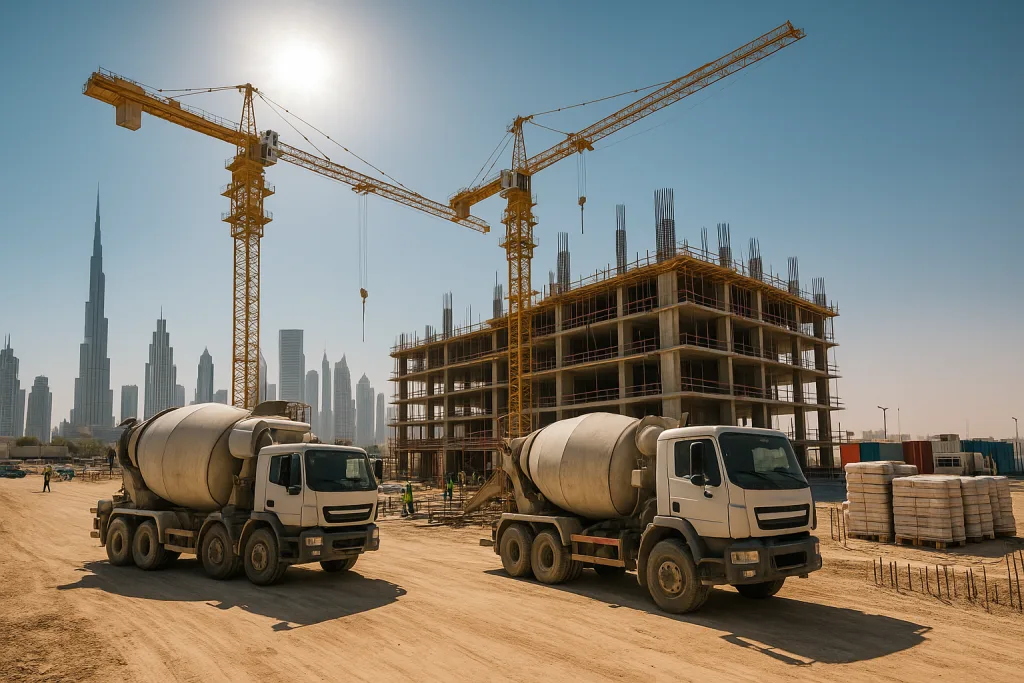
Introduction
Cement for hot climate construction is one of the most critical considerations for builders and developers across the Middle East, Africa, and South Asia. With temperatures soaring above 45°C in many regions and humidity fluctuating between dry desert air and coastal moisture, ordinary cement often struggles to deliver the durability needed for large-scale projects. Choosing the right cement for hot climate projects is crucial for builders in the GCC and other high-temperature regions.
If you’re building in Dubai, Muscat, Riyadh, or coastal cities like Doha, choosing the right cement type can mean the difference between a structure that lasts a century and one that shows cracks in a few years. This guide explores how high temperatures affect cement performance, which types are best suited for hot climates, and how Karbin Cement ensures long-lasting supply solutions for the GCC and beyond.
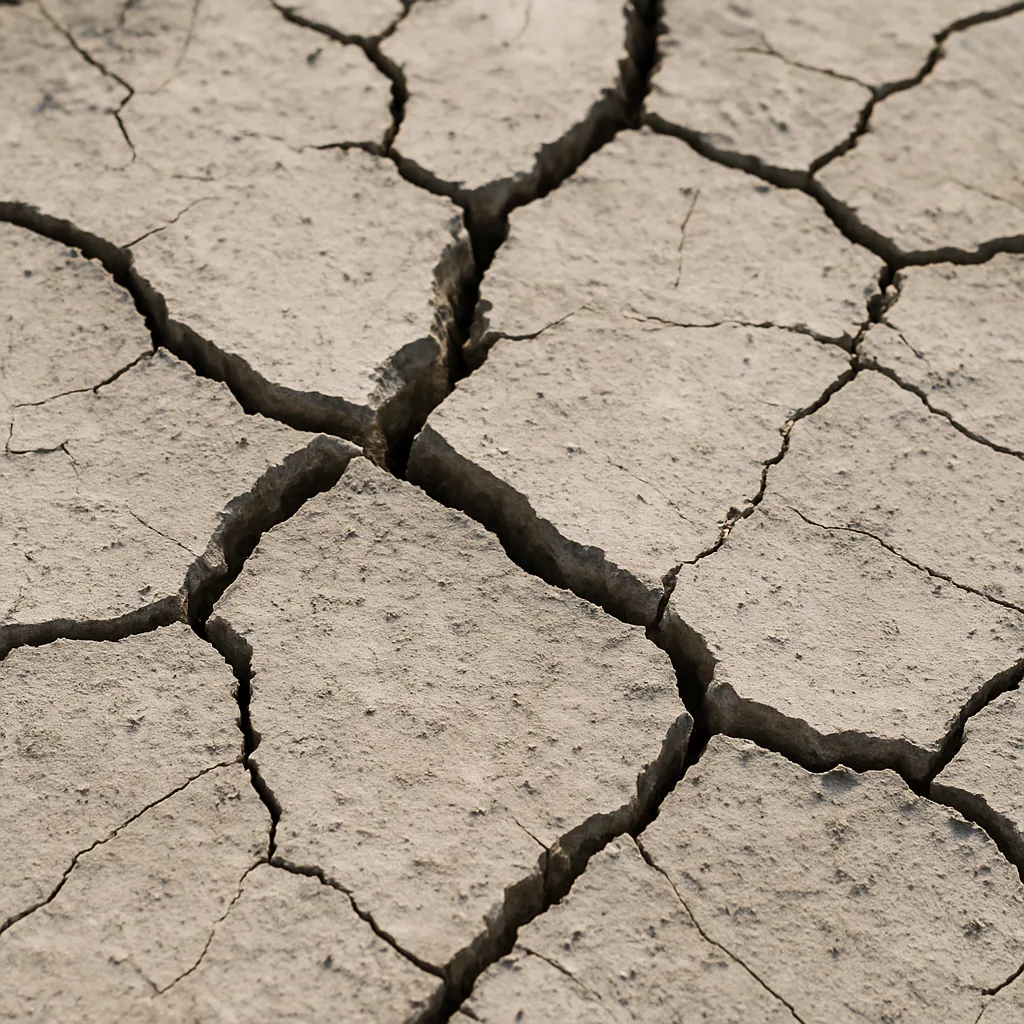
How Hot Climate Affects Cement Performance
Hot weather has a direct impact on the way cement reacts during mixing, curing, and long-term durability. Some key issues include:
- Accelerated Setting Time
High temperatures increase the hydration rate of cement, causing it to set too quickly. This can lead to improper bonding and reduced strength. - Cracking and Shrinkage
Rapid drying and moisture loss in hot climates make concrete more prone to surface cracks and shrinkage. - Reduced Workability
Workers often find it challenging to handle cement mixes in hot climates, as mixtures stiffen faster than expected. - Moisture Evaporation
Strong sunlight accelerates water evaporation, leading to weaker concrete unless proper curing methods are applied.
These issues explain why using cement for hot climate applications requires extra care in design and curing. According to ASTM Standards on Hot Weather Concreting, careful cement selection and curing methods are essential to avoid structural weaknesses in hot climates.
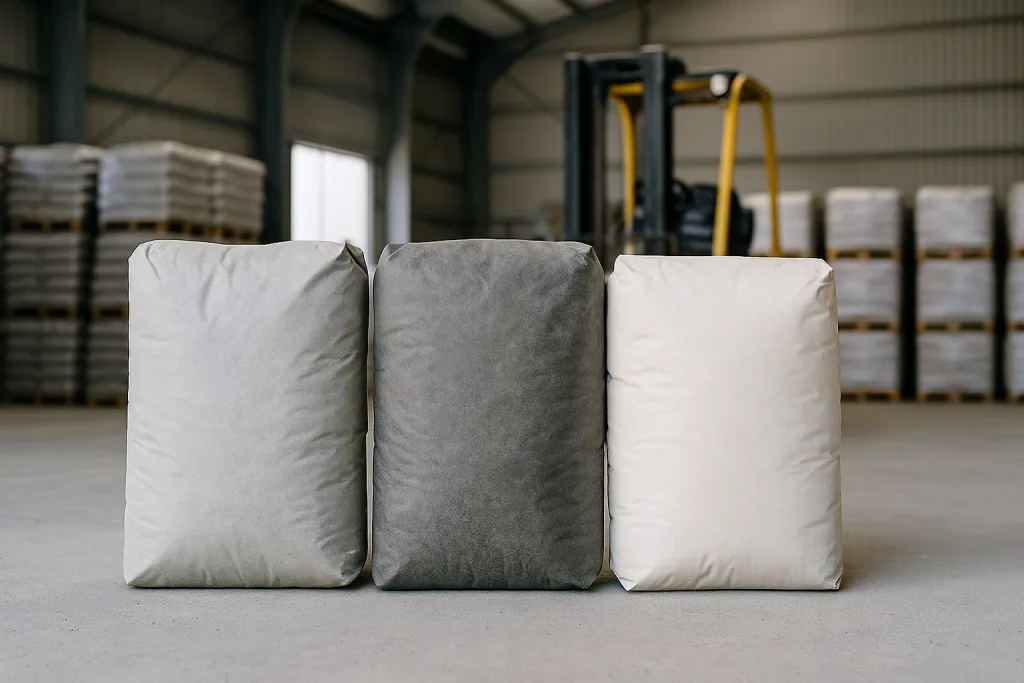
Best Cement Types for Hot Climate
The best cement for hot climate construction depends on project type, setting time, and exposure conditions. Not all cements perform equally under extreme heat. Builders and exporters must select the right type depending on local conditions.
1. Type II Cement (Moderate Heat of Hydration)
- Designed for moderate sulfate resistance and reduced heat generation.
- Ideal for desert regions like Saudi Arabia and inland GCC projects.
- Extends setting time, giving workers more flexibility.
- For desert projects, Type II is one of the most reliable choices of cement for hot climate construction.
2. Type IV Cement (Low Heat Cement)
- Specifically developed for massive structures in hot environments.
- Slows hydration and heat buildup, preventing thermal cracking.
- Best for dams, thick foundations, and mega infrastructure.
3. Sulfate-Resistant Cement
- Essential for hot and humid coastal climates where seawater exposure is common.
- Protects against chemical erosion from sulfate salts.
- Widely used in Oman, UAE, and Bahrain for marine infrastructure.
4. Blended Cements (PPC, Slag Cement)
- Made by mixing Portland cement with fly ash or blast furnace slag.
- Reduces permeability and improves durability in hot climates.
- Eco-friendly choice with lower carbon footprint.
Related: Explore Our Cement Products
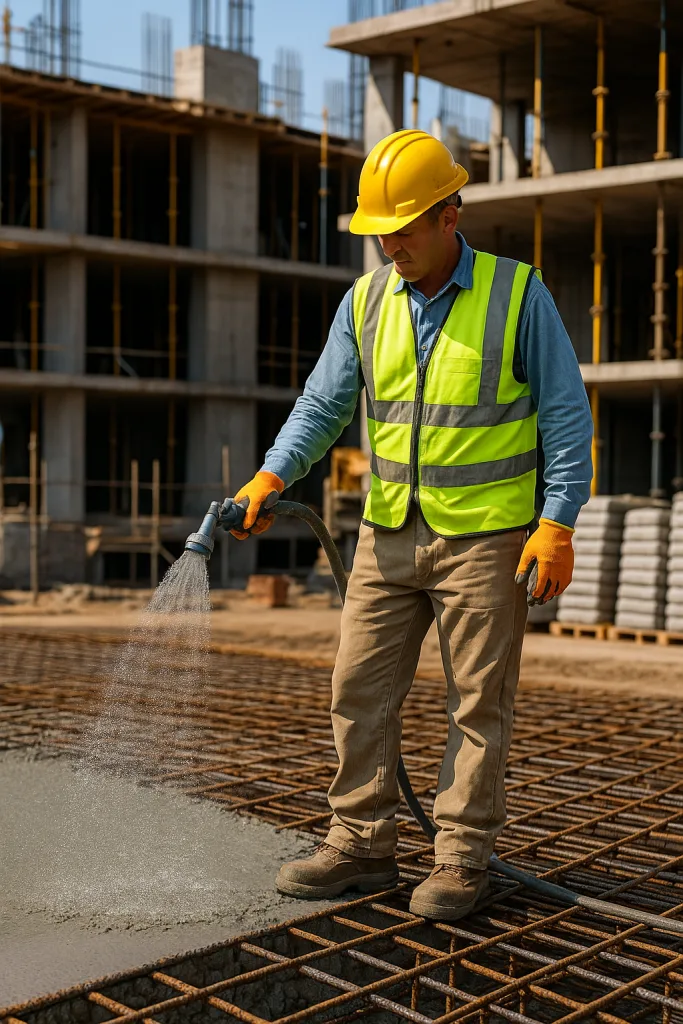
Practical Tips for Using Cement in Hot Climates
Even with the right cement type, success depends on handling and curing techniques.
- Pre-Cool Materials
Use chilled mixing water or shade aggregates to lower initial concrete temperature. - Add Admixtures
Retarders can extend setting time, improving workability in extreme heat. - Cure Immediately
Cover concrete with wet burlap, sprinklers, or curing compounds to prevent water loss. - Work at Cooler Hours
Early morning or night concreting helps reduce heat-related issues. - Control Mix Design
Adjust water-to-cement ratios carefully to maintain strength without drying too fast. Admixtures and careful curing extend the performance of cement for hot climate concreting.
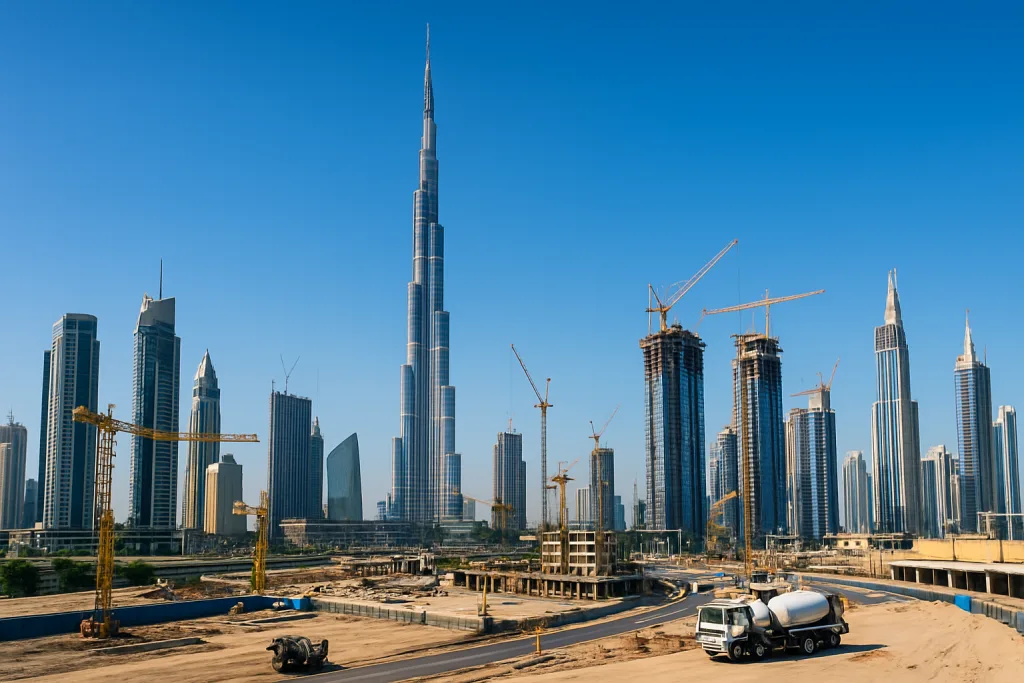
Case Studies: Hot Climate Construction in the GCC
Dubai – High-Rise Skyscrapers
Dubai’s skyline relies on advanced cement types to withstand heat and humidity. Type II and blended cements ensure skyscrapers remain crack-free even in extreme summers.
Oman – Coastal Housing Projects
Sulfate-resistant cement is the backbone of Oman’s coastal housing developments, protecting foundations against seawater erosion.
Saudi Arabia – Desert Infrastructure
Saudi Arabia’s highways and mega-projects like NEOM rely heavily on low-heat and blended cements to handle high desert temperatures.
These examples show how different types of cement for hot climate projects succeed across the GCC. Report: Middle East Construction Outlook predicts a 5% annual growth in cement demand across GCC by 2025.
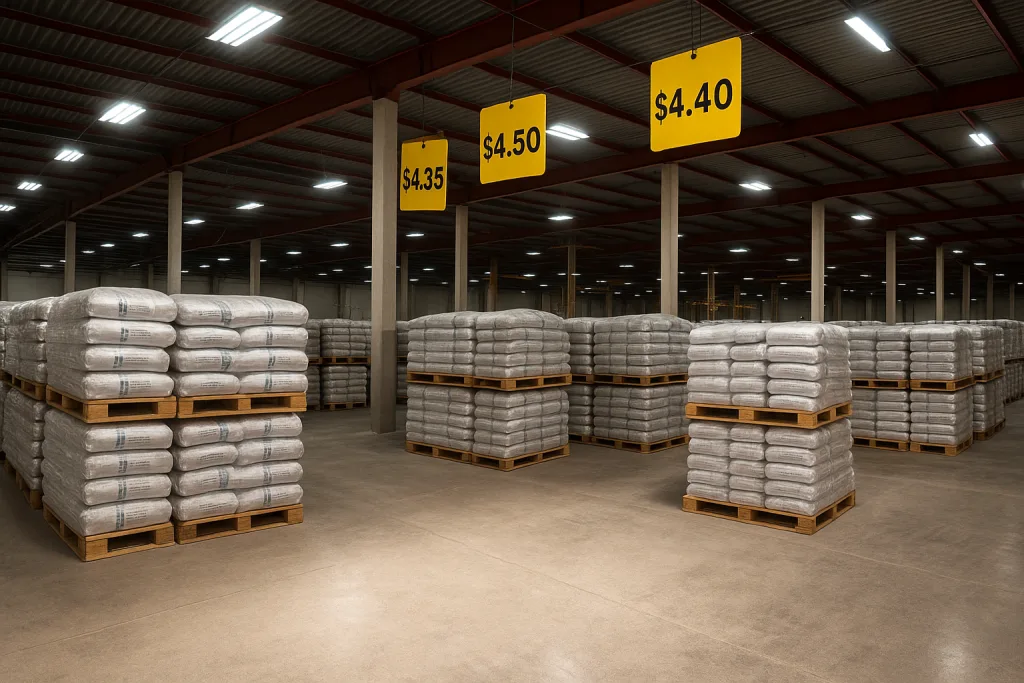
Cost Considerations for Exporters
Exporting cement for hot climate projects requires balancing durability with cost-efficiency.
- Type II Cement – $45–$55 per ton
- Type IV Cement – $60–$70 per ton
- Sulfate-Resistant Cement – $50–$65 per ton
- Blended Cements – $48–$60 per ton
While prices vary, exporters supplying cement for hot climate markets must balance durability with affordability. Cements cost more than ordinary Portland cement, their long-term benefits in hot climates far outweigh initial price differences.
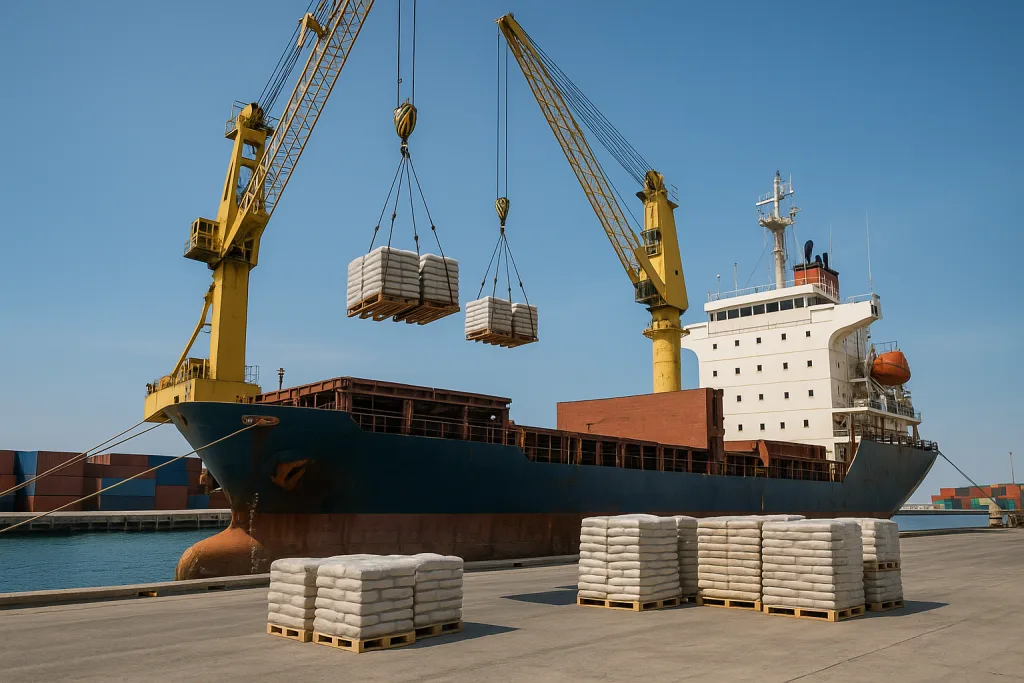
Karbin Cement’s Hot Climate Solutions
At Karbin Cement, we specialize in providing cement types specifically engineered for hot and humid climates. Our portfolio includes:
✔️ Type II Cement – ideal for desert projects
✔️ Sulfate-Resistant Cement – for coastal cities
✔️ White Cement – for luxury projects with heat resistance
✔️ Clinker exports – for buyers who prefer local grinding
Export Advantages:
- Bulk shipments and 50kg bags available
- Fast shipping via Chabahar Free Zone to UAE, Oman, and Qatar
- Compliance with ASTM and EN standards
- Customized labeling for private distributors
- Explore Our Cement Types
- Contact Karbin Cement for export orders
FAQ
Q1: Which cement type is best for desert construction?
Type II cement is the most common choice for desert regions due to its moderate heat of hydration.
Q2: Does white cement perform well in hot climates?
Yes, white cement is stable in hot environments and often used in decorative projects.
Q3: How can I reduce cracks in hot weather concreting?
Use retarders, ensure proper curing, and choose cement with slower hydration rates.
Q4: Does Karbin Cement export to the GCC?
Yes, Karbin Cement exports to the UAE, Oman, Qatar, and other GCC countries through Chabahar Port.
Conclusion
Selecting the right cement for hot climate ensures projects last for decades despite extreme weather. Building in hot climates requires careful cement selection. By choosing the right type—Type II, Type IV, sulfate-resistant, or blended cements—builders can ensure durability, prevent cracking, and reduce long-term maintenance costs.
Cement for hot climate construction is not just about withstanding the heat; it’s about delivering projects that stand strong for decades.
Get a Quote from Karbin Cement today for export-ready cement solutions built for hot and humid environments.
